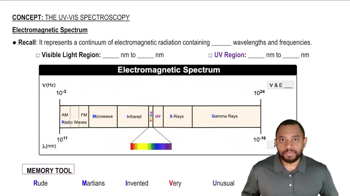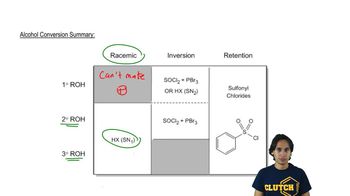There are three carbon–oxygen bonds in methyl acetate.
a. What are their relative bond lengths?
b. What are the relative infrared (IR) stretching frequencies of these bonds?
 Verified step by step guidance
Verified step by step guidance Verified video answer for a similar problem:
Verified video answer for a similar problem:



 16:4m
16:4mMaster General Features of IR Spect with a bite sized video explanation from Johnny
Start learning